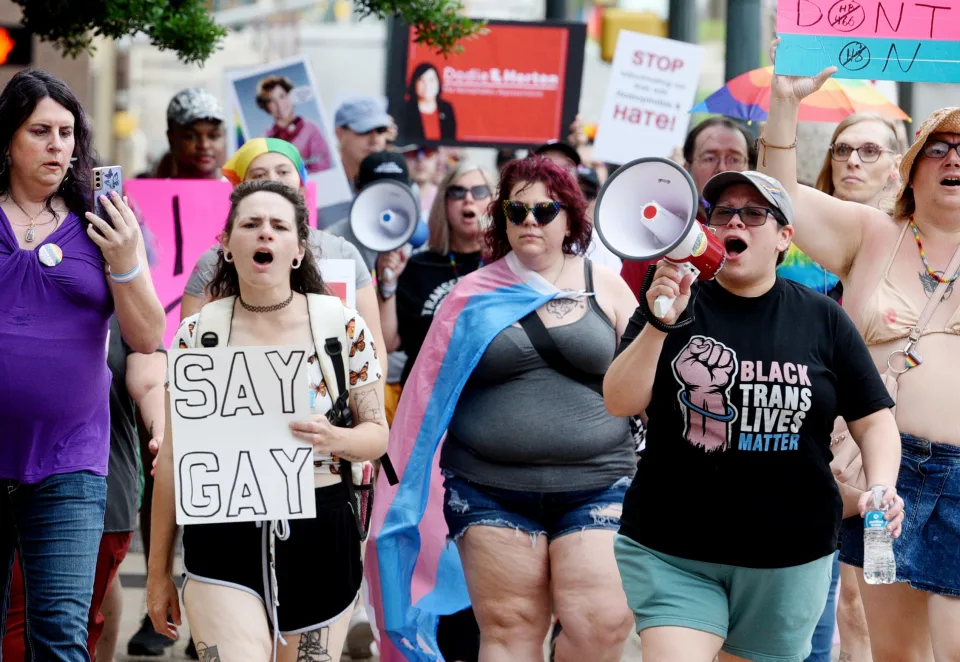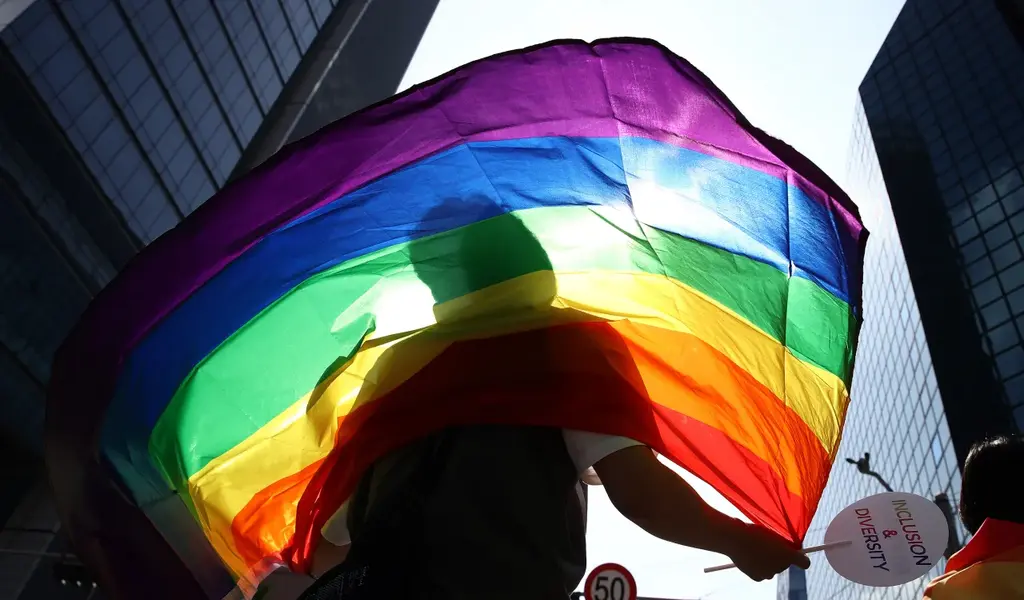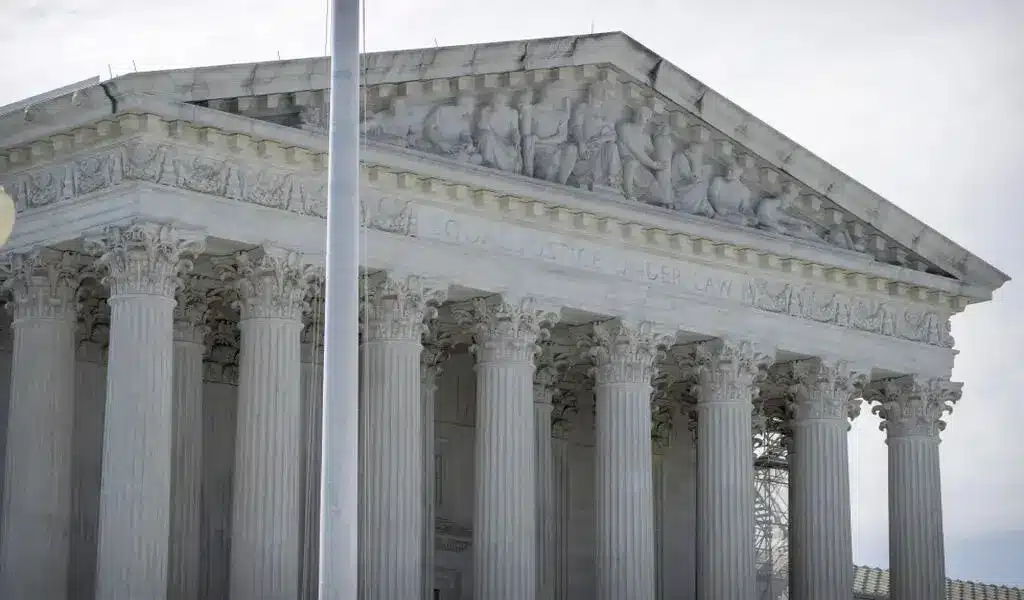News
Latest Data Reveals LGBTQ+ Percentage in the U.S. and Top States
(CTN News) – The majority of the country’s adult lesbian, homosexual, bisexual, and transgender population resides in the South, according to new statistics. This confirms previous findings.
More than 5% of adults in the United States are LGBTQ+, according to researchers, which is in line with previous LGBTQ+ population figures. Among those who identify as LGBTQ+, the Williams Institute at UC Los Angeles found that the prevalence is highest among young adults (18–24 years old).
The study indicated that in 2020 and 2021, over 14 million adults identified as LGBTQ+ lived in the United States, with notably larger proportions of homosexual and queer residents in certain states compared to others, according to statistics from the Centers for Disease Control and Prevention.
An earlier Gallup poll this year indicated that the LGBTQ+ population in the United States is somewhat larger than in previous years. The adult LGBTQ population has, according to some surveys, been growing at a steady rate for some time.
“Look at the numbers, more people are coming out younger and people are coming out in places where LGBTQ folks have been less out and visible,” said Cathy Renna, a spokesperson for the National LGBTQ Task Force, in an interview with USA TODAY.
When looking at the percentage of homosexual and queer residents broken down by state, the survey finds that Delaware, Oregon, and Washington, D.C. top the list.
Even though it is the most famous census in the country, it does not inquire about the sexual orientation or gender identity of any American citizens. Questions like these were initially asked of respondents in smaller polls conducted by the agency in 2021.

How many people in the US are LGBTQ?
According to the Williams Institute, a prominent national organization that studies LGBTQ+ populations, there are approximately 13.9 million LGBTQ+ adults in the United States, making up around 5.5% of the total population.
A Gallup poll that estimates the number of Americans who identify as lesbian, gay, bisexual, or transgender is also released annually.
7.2% of the 10,000 people surveyed for Gallup’s most recent research identified as LGBTQ+. Adults born in the Generation Z cohort (those born between 1997 and 2012) had the highest rate, as reported by the Pew Research Center.
South continues to have the highest percentage of LGBTQ+ people
Based on these latest numbers, it’s clear that the South is home to over 5 million LGBTQ+ adults, or about 36% of the total. Additionally, this is a rise from the most recent data published by the Williams Institute in 2014, which indicated that 35% of the country’s LGBTQ+ population resided in the South.
Researchers described the South as the states that extend northward through Delaware, from Florida to Texas and Oklahoma. This cluster includes the states of Kentucky, West Virginia, and the nation’s capital.
More restrictions on transgender health care, school athletics, and LGBTQ+ history education have been enacted in states headed by Republicans in the South in recent years than to any other region of the nation.
Because of this, the South is leading the charge for LGBTQ+ equality and rights on a national level, according to Renna.
“Despite the backlash and despite challenges we’re facing, we’re resilient and we’re not going anywhere,” added Renna.
Renna, speaking from New Orleans—the site of the National LGBTQ Task Force’s next annual conference—said that the South, with its large population of persons subjected to the worst laws, is the region where lives are most at risk.

“This is where a lot of the work really needs to happen,” she added, explaining that her organization’s choice to hold its conference in Louisiana was driven by the fact that “there are so many LGBTQ people here that are underrepresented in media, culture and frankly in the movement.”
Compared to other states, such as New York, California, and Illinois, Louisiana ranks slightly higher with 5.7% of its adult population identifying as LGBTQ+.
In 2021, GLAAD, another LGBTQ+ advocacy group, examined how the media in the South covered LGBTQ+ communities. They discovered that over the 18-month period ending in December 2020, numerous sources published zero or very few significant pieces about LGBTQ+ concerns, including HIV/AIDS.
Gen Z most likely to be LGBTQ+
The LGBTQ+ population is significantly more numerous among Generation Z, the most recent adult cohort in the United States.
In 2020 and 2021, researchers discovered that over 4.6 million individuals, or 15.2% of Gen Z, identified as LGBTQ+.
In 2022, 19.7% of Gen Z, or nearly 20% of the population, identified as LGBTQ+, according to a Gallup poll conducted earlier this year.
“It’s certainly not uncommon for younger people to say they’re lesbian, gay, bisexual, transgender or however else they would identify themselves,” commented Jeff Jones, a Gallup researcher who has been collecting LGBTQ+ population data since 2012.
According to Jones, the total number of LGBTQ+ adults in the country is increasing every year as more members of Generation Z reach maturity.
“As more come into adulthood, replacing the older people, the overall number should go up,” according to him.
The majority of people who identify as LGBTQ+ are bisexual.
For a long time, researchers have discovered that over 50% of the LGBTQ+ community in the United States consists of bisexual individuals, who experience attraction to both sexes.
The Williams Institute did not use a sexuality-based data breakdown but instead examined LGBTQ+ numbers on a state-by-state basis.
More than 58% of the LGBTQ+ adult population in the US identifies as bisexual, according to the most current Gallup data.
Bisexuals are much less likely to come out to close friends and family than homosexuals and lesbians, according to 2019 research. Researchers in the field of public health who focus on sexuality have hypothesized that biphobia may be at play.
What states have the most LGBTQ+ people?
The Williams Institute has ranked the states with the highest percentage of LGBTQ+ citizens in its most recent data set, which was released this month.
With 14.3% of respondents identifying with the acronym, Washington, D.C. wins the top rank, just like in recent years.
Listed below are the other leading states in terms of the percentage of adults who identified as LGBTQ+:
- Washington, D.C. − 14.3%
- Oregon − 7.8%
- Delaware − 7.5%
- Vermont − 7.4%
- New Hampshire − 7.2%
- Washington − 6.9%
- Colorado − 6.8%
- Maine − 6.8%
- Nevada − 6.6%
- Massachusetts − 6.5%

News
Google’s Search Dominance Is Unwinding, But Still Accounting 48% Search Revenue

Google is so closely associated with its key product that its name is a verb that signifies “search.” However, Google’s dominance in that sector is dwindling.
According to eMarketer, Google will lose control of the US search industry for the first time in decades next year.
Google will remain the dominant search player, accounting for 48% of American search advertising revenue. And, remarkably, Google is still increasing its sales in the field, despite being the dominating player in search since the early days of the George W. Bush administration. However, Amazon is growing at a quicker rate.
Google’s Search Dominance Is Unwinding
Amazon will hold over a quarter of US search ad dollars next year, rising to 27% by 2026, while Google will fall even more, according to eMarketer.
The Wall Street Journal was first to report on the forecast.
Lest you think you’ll have to switch to Bing or Yahoo, this isn’t the end of Google or anything really near.
Google is the fourth-most valued public firm in the world. Its market worth is $2.1 trillion, trailing just Apple, Microsoft, and the AI chip darling Nvidia. It also maintains its dominance in other industries, such as display advertisements, where it dominates alongside Facebook’s parent firm Meta, and video ads on YouTube.
To put those “other” firms in context, each is worth more than Delta Air Lines’ total market value. So, yeah, Google is not going anywhere.
Nonetheless, Google faces numerous dangers to its operations, particularly from antitrust regulators.
On Monday, a federal judge in San Francisco ruled that Google must open up its Google Play Store to competitors, dealing a significant blow to the firm in its long-running battle with Fortnite creator Epic Games. Google announced that it would appeal the verdict.
In August, a federal judge ruled that Google has an illegal monopoly on search. That verdict could lead to the dissolution of the company’s search operation. Another antitrust lawsuit filed last month accuses Google of abusing its dominance in the online advertising business.
Meanwhile, European regulators have compelled Google to follow tough new standards, which have resulted in multiple $1 billion-plus fines.

Pixa Bay
Google’s Search Dominance Is Unwinding
On top of that, the marketplace is becoming more difficult on its own.
TikTok, the fastest-growing social network, is expanding into the search market. And Amazon has accomplished something few other digital titans have done to date: it has established a habit.
When you want to buy anything, you usually go to Amazon, not Google. Amazon then buys adverts to push companies’ products to the top of your search results, increasing sales and earning Amazon a greater portion of the revenue. According to eMarketer, it is expected to generate $27.8 billion in search revenue in the United States next year, trailing only Google’s $62.9 billion total.
And then there’s AI, the technology that (supposedly) will change everything.
Why search in stilted language for “kendall jenner why bad bunny breakup” or “police moving violation driver rights no stop sign” when you can just ask OpenAI’s ChatGPT, “What’s going on with Kendall Jenner and Bad Bunny?” in “I need help fighting a moving violation involving a stop sign that wasn’t visible.” Google is working on exactly this technology with its Gemini product, but its success is far from guaranteed, especially with Apple collaborating with OpenAI and other businesses rapidly joining the market.
A Google spokeswoman referred to a blog post from last week in which the company unveiled ads in its AI overviews (the AI-generated text that appears at the top of search results). It’s Google’s way of expressing its ability to profit on a changing marketplace while retaining its business, even as its consumers steadily transition to ask-and-answer AI and away from search.

Google has long used a single catchphrase to defend itself against opponents who claim it is a monopoly abusing its power: competition is only a click away. Until recently, that seemed comically obtuse. Really? We are going to switch to Bing? Or Duck Duck Go? Give me a break.
But today, it feels more like reality.
Google is in no danger of disappearing. However, every highly dominating company faces some type of reckoning over time. GE, a Dow mainstay for more than a century, was broken up last year and is now a shell of its previous dominance. Sears declared bankruptcy in 2022 and is virtually out of business. US Steel, long the foundation of American manufacturing, is attempting to sell itself to a Japanese corporation.
SOURCE | CNN
News
2024 | Supreme Court Won’t Hear Appeal From Elon Musk’s X Platform Over Warrant In Trump Case

Washington — Trump Media, The Supreme Court announced Monday that it will not hear an appeal from social media platform X about a search warrant acquired by prosecutors in the election meddling case against former President Donald Trump.
The justices did not explain their rationale, and there were no recorded dissents.
The firm, which was known as Twitter before being purchased by billionaire Elon Musk, claims a nondisclosure order that prevented it from informing Trump about the warrant obtained by special counsel Jack Smith’s team violated its First Amendment rights.
The business also claims Trump should have had an opportunity to exercise executive privilege. If not reined in, the government may employ similar tactics to intercept additional privileged communications, their lawyers contended.
Supreme Court Won’t Hear Appeal From Elon Musk’s X Platform Over Warrant In Trump Case
Two neutral electronic privacy groups also joined in, urging the high court to hear the case on First Amendment grounds.
Prosecutors, however, claim that the corporation never shown that Trump utilized the account for official purposes, therefore executive privilege is not a problem. A lower court also determined that informing Trump could have compromised the current probe.

Trump utilized his Twitter account in the weeks preceding up to his supporters’ attack on the Capitol on January 6, 2021, to spread false assertions about the election, which prosecutors claim were intended to create doubt in the democratic process.
The indictment describes how Trump used his Twitter account to encourage his followers to travel to Washington on Jan. 6, pressuring Vice President Mike Pence to reject the certification, and falsely claiming that the Capitol crowd, which battered police officers and destroyed glass, was peaceful.
Supreme Court Won’t Hear Appeal From Elon Musk’s X Platform Over Warrant In Trump Case
That case is now moving forward following the Supreme Court’s verdict in July, which granted Trump full immunity from criminal prosecution as a former president.
The warrant arrived at Twitter amid quick changes implemented by Musk, who bought the company in 2022 and has since cut off most of its workforce, including those dedicated to combating disinformation and hate speech.
SOURCE | AP
News
The Supreme Court Turns Down Biden’s Government Appeal in a Texas Emergency Abortion Matter.

(VOR News) – A ruling that prohibits emergency abortions that contravene the Supreme Court law in the state of Texas, which has one of the most stringent abortion restrictions in the country, has been upheld by the Supreme Court of the United States. The United States Supreme Court upheld this decision.
The justices did not provide any specifics regarding the underlying reasons for their decision to uphold an order from a lower court that declared hospitals cannot be legally obligated to administer abortions if doing so would violate the law in the state of Texas.
Institutions are not required to perform abortions, as stipulated in the decree. The common populace did not investigate any opposing viewpoints. The decision was made just weeks before a presidential election that brought abortion to the forefront of the political agenda.
This decision follows the 2022 Supreme Court ruling that ended abortion nationwide.
In response to a request from the administration of Vice President Joe Biden to overturn the lower court’s decision, the justices expressed their disapproval.
The government contends that hospitals are obligated to perform abortions in compliance with federal legislation when the health or life of an expectant patient is in an exceedingly precarious condition.
This is the case in regions where the procedure is prohibited. The difficulty hospitals in Texas and other states are experiencing in determining whether or not routine care could be in violation of stringent state laws that prohibit abortion has resulted in an increase in the number of complaints concerning pregnant women who are experiencing medical distress being turned away from emergency rooms.
The administration cited the Supreme Court’s ruling in a case that bore a striking resemblance to the one that was presented to it in Idaho at the beginning of the year. The justices took a limited decision in that case to allow the continuation of emergency abortions without interruption while a lawsuit was still being heard.
In contrast, Texas has been a vocal proponent of the injunction’s continued enforcement. Texas has argued that its circumstances are distinct from those of Idaho, as the state does have an exemption for situations that pose a significant hazard to the health of an expectant patient.
According to the state, the discrepancy is the result of this exemption. The state of Idaho had a provision that safeguarded a woman’s life when the issue was first broached; however, it did not include protection for her health.
Certified medical practitioners are not obligated to wait until a woman’s life is in imminent peril before they are legally permitted to perform an abortion, as determined by the state supreme court.
The state of Texas highlighted this to the Supreme Court.
Nevertheless, medical professionals have criticized the Texas statute as being perilously ambiguous, and a medical board has declined to provide a list of all the disorders that are eligible for an exception. Furthermore, the statute has been criticized for its hazardous ambiguity.
For an extended period, termination of pregnancies has been a standard procedure in medical treatment for individuals who have been experiencing significant issues. It is implemented in this manner to prevent catastrophic outcomes, such as sepsis, organ failure, and other severe scenarios.
Nevertheless, medical professionals and hospitals in Texas and other states with strict abortion laws have noted that it is uncertain whether or not these terminations could be in violation of abortion prohibitions that include the possibility of a prison sentence. This is the case in regions where abortion prohibitions are exceedingly restrictive.
Following the Supreme Court’s decision to overturn Roe v. Wade, which resulted in restrictions on the rights of women to have abortions in several Republican-ruled states, the Texas case was revisited in 2022.
As per the orders that were disclosed by the administration of Vice President Joe Biden, hospitals are still required to provide abortions in cases that are classified as dire emergency.
As stipulated in a piece of health care legislation, the majority of hospitals are obligated to provide medical assistance to patients who are experiencing medical distress. This is in accordance with the law.
The state of Texas maintained that hospitals should not be obligated to provide abortions throughout the litigation, as doing so would violate the state’s constitutional prohibition on abortions. In its January judgment, the 5th United States Circuit Court of Appeals concurred with the state and acknowledged that the administration had exceeded its authority.
SOURCE: AP
SEE ALSO:
Could Last-Minute Surprises Derail Kamala Harris’ Campaign? “Nostradamus” Explains the US Poll.
-

 News4 years ago
News4 years agoLet’s Know About Ultra High Net Worth Individual
-
Entertainment2 years ago
Mabelle Prior: The Voice of Hope, Resilience, and Diversity Inspiring Generations
-
News11 years ago
Enviromental Groups Tell Mekong Leaders Lao Dam Evaluation Process Flawed
-

 Health4 years ago
Health4 years agoHow Much Ivermectin Should You Take?
-

 Tech3 years ago
Tech3 years agoTop Forex Brokers of 2023: Reviews and Analysis for Successful Trading
-

 Lifestyles3 years ago
Lifestyles3 years agoAries Soulmate Signs
-

 Entertainment3 years ago
Entertainment3 years agoWhat Should I Do If Disney Plus Keeps Logging Me Out of TV?
-

 Health3 years ago
Health3 years agoCan I Buy Ivermectin Without A Prescription in the USA?


